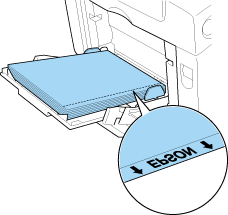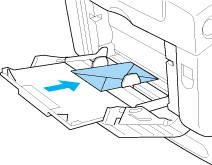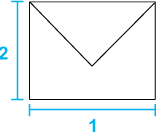 |
Printing on Special Media
 EPSON Color Laser Paper EPSON Color Laser Paper
 EPSON Color Laser Transparencies EPSON Color Laser Transparencies
 Envelopes Envelopes
 Labels Labels
 Thick paper and extra thick paper Thick paper and extra thick paper
 Loading a custom paper size Loading a custom paper size
You can print on special media which include Epson paper such as the following.
 |
Note: |
 |
|
Since the quality of any particular brand or type of media may be changed by the manufacturer at any time, Epson cannot guarantee the quality of any type of media. Always test samples of media stock before purchasing large quantities or printing large jobs.
|
|
When loading EPSON Color Laser Paper, you should make paper settings as shown below:
|
Paper Size:
|
A4
|
|
Paper Source:
|
MP Tray (up to 150 sheets or up to 15 mm thick stack)
Lower Cassette (up to 550 sheets or up to 61 mm thick stack in each cassette)
|
|
Paper Type:
|
Semi-Thick
|
EPSON Color Laser Transparencies
Epson recommends the use of EPSON Color Laser Transparencies.
 |
Note: |
 |
|
Duplex printing is not available for transparencies.
|
|
Transparencies can be loaded into the MP tray only. When using transparencies, you should make paper settings as shown below:
|
Paper Size:
|
A4 or LT
|
|
Paper Source:
|
MP Tray (up to 15 mm thick stack)
|
|
Paper Type:
|
Transparency
|
Please note the following when handling this media:

 |
Caution: |
 |
|
Sheets that have just been printed on may be hot.
|
|
The print quality of envelopes may be irregular because different parts of an envelope have different thicknesses. Print one or two envelopes to check the print quality.
 |
Caution: |
 |
|
Do not use window envelopes. The plastic on most window envelopes will melt when it comes into contact with the fuser.
|
|
 |
Note: |
 |
-
Depending on the quality of envelopes, the printing environment, or the printing procedure, envelopes might be wrinkled. Make a trial print run before you print on a lot of envelopes.
|
|
When loading envelopes, you should make paper settings as shown below:
|
Paper Size:
|
IB5 or DL
|
|
Paper Source:
|
MP Tray (up to 15 mm thick stack)
|
Please note the following when handling this media.

 |  |
Caution: |
 |  |
|
Make sure that the minimum size of envelopes meets the following size requirements:

1. Minimum length of a long edge: 176 mm
2. Minimum length of a short edge: 110 mm
|
|
You can load up to 15 mm thickness of labels into the MP tray at a time. However, you may need to feed some labels one sheet at a time, or load them manually.
 |
Note: |
 |
-
Depending on the quality of labels, the printing environment, or the printing procedure, labels might be wrinkled. Make a trial print run before you print on a lot of labels.
|
|
When loading labels, you should make paper settings as shown below:
|
Paper Size:
|
A4 or LT
|
|
Paper Source:
|
MP Tray (up to 15 mm thick stack)
|
|
Paper Type:
|
Labels
|
 |
Note: |
Thick paper and extra thick paper
You can load thick paper (106 to 163 g/m²) or extra thick paper (164 to 216 g/m²) into the MP tray.
When loading thick or extra thick paper, you should make paper settings as shown below:
|
Paper Size:
|
A4, A5, B5, LT, HLT, EXE, GLT
|
|
Paper Source:
|
MP Tray (up to 15 mm thick stack)
|
|
Paper Type:
|
Thick or Extra Thick
|
 |  |
Note: |
 |  |
|
When using extra thick paper, you cannot do duplex printing automatically. When you want to do duplex printing with extra thick paper, set the Paper Type setting on printer driver to Extra Thick (Back), then do the duplex printing manually.
|
|
Loading a custom paper size
You can load non-standard size paper (88.9 × 139.7 mm to 220 × 355.6 mm) into the MP tray.
When loading a custom paper size, you should make paper settings as shown below:
|
Paper Size:
|
User Defined Size
|
|
Paper Source:
|
MP Tray (up to 15 mm thick stack)
|
|
Paper Type:
|
Plain, Semi-Thick, Thick or Extra Thick
|
 |  |
Note: |
 |  |
-
For Windows, access the printer driver, then select User-Defined Size from the Paper Size list on the Basic Settings tab. In the User Defined Paper Size dialog box, adjust the Paper Width, Paper Length, and Unit settings to match your custom paper. Then click OK and your custom paper size will be saved.
-
For Macintosh, access the printer driver, click Custom Size in the Paper Setting dialog box. Then click New, adjust the Paper Width, Paper Length, and Margin settings to match your custom paper. Then enter the setting’s name, and click OK to save your custom paper size.
|
|
|  |








 EPSON Color Laser Paper
EPSON Color Laser Paper
 Top
Top
